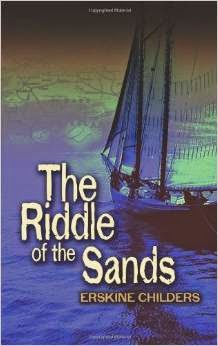Visit to the Skelligs
 |
| The Skellig rocks |
The Skelligs (Na Scealga) are two rocks off the west coast of Ireland. One of the rocks is inaccessible. The other has a landing site that is untenable in some states of weather and sea. The allure of these rocks is twofold: 1) They are home to an exceptional number of seabirds, especially gannets and puffins and 2) they have exceptionally well-preserved early Christian remains.
Skellig Michael has a rather impressive monastic settlement, including beehive huts where the monks lived, a beehive church, a large beehive communal kitchen, a high carved cross and a burial area. Most astonishingly, the monastery is at the top of the rock. To get to it, you must climb 618 steps with precipices on either side. The steps are uneven in height and width, so it is not straightforward.
Alex and I have been trying to visit Skellig Michael since we moved to Ireland and we have sailed around it on our own boat. But there are only a limited number of boats licensed to land on the island daily, each carrying only 12 passengers. After Star Wars filmed the last two episodes there (it's where Luke Skywalker was hiding out), it was impossible to get a booking, until Covid 19 caused the world to stop spinning. It is one of two UNESCO World Heritage sites in Ireland (the other being Bru na Boinne passage tombs in the east).
Alex made a reservation in 2019 for early 2020 with Casey's. But when the pandemic dragged on and restrictions remained, it was rescheduled several times. If the weather was bad on the chosen day, we'd be cancelled. As it turned out, we had a week of fine weather when a high-pressure system settled over Ireland and refused to budge: 20-25C, blue skies, calm seas.
We had reservations at a B&B in Portmagee where we would stay the night before as the boats leave early in the morning. We had a pint and then dinner outside at the Fisherman's Bar & Skellig Restaurant in Portmagee. We ordered the seafood special for two and it was amazing. Then straight to bed where I tossed and turned for hours, stressing about the day to come. I was pretty sure I could make it up, but getting down I knew would be a challenge. Finally, I decided if I couldn't get down due to fear, I could always come down on my bum. From that point on I knew I slept because I had extraordinarily complex, detailed and bizarre nightmares. Not a great way to rest up before a challenging day.
It takes about 6 hours all told and the time flies. We were told to be there for departure 15 minutes before 9:30 am. The little food shop in Portmagee prepares sandwiches that you order the night before and pick up the morning of. There are public toilets in town but not on the boats. They said there were no toilets on the island but there is a port-a-potty kind of installation. (Phew!) The boat trip out takes about 40 minutes to an hour and each boat gets a 15-minute preassigned slot for landing.
Shockingly, sitting right next to us on the boat was a couple who we did not recognise. But the woman turned to me and asked, "Are you Daria Blackwell?" I tentatively said, "Yes." "I'm Thereasa McGuire." OMG, Thereasa and Robert are from Westport and I sat next to her at a dinner once - we had a hoot together. Only in Ireland.
We took off as scheduled. The boatman showed us where the first transatlantic cable came up over Valentia Island, pointed out seals on rocks, showed us puffin island but the puffins had left already in July. Then we motored over to Little Skellig which was covered in gannets and other seabirds. Although the puffins had left, Alex spotted one pair. I have never seen so many birds in one spot. We donned our hats as protection from those flying overhead.
The boatman then took us inside a rock outcropping. We almost $%!£ ourselves. But he timed it exquisitely. Alex asked him how many times he's done that. He said, "A few times in settled conditions, and in some years not at all."
The landing on Skellig Michael was smooth as the sea was glass calm. Before ascending, everyone gets a safety lecture as there have been accidents. There are OPW stewards living on the island and giving talks and tours. The three on our day were all women and very good.
Alex and I climbed without walking sticks and it was okay. There are parts where the precipice is right there and they have chains you can hold onto along a wall. In other places, there is no wall only the steps dug into the rocks. There's a rock called the 'wailing woman'. And there's a landing called the lord's saddle just before the last terrifying flight of stairs. The gulls have learned to beg for food as people stop there for lunch.
It was a magnificent experience. Although neither one of us felt the spirituality that we always feel in the Inishkeas or Caher Island or Iona. Possibly because of the number of people. Possibly because it's been sanitised by the OPW. But it was thrilling to imagine the monks living up there, running up and down the stairs, growing their vegetables, eating sea birds, building structures that have lasted hundreds of years, and praying on a rock 11.5 km out to sea.
It's something we really wanted to do and we're very glad to have had the experience. Going down was harder than going up. It was hard on the knees and the thighs, but also hard to concentrate on looking at the next step without looking down further. It was totally worth the two days of excruciating pain in our knees and legs afterwards. We didn't stay an extra night but rather drove home - a 5-hour drive - after 6 hours out.
It all felt rather surreal yet normal in a way. After two years of isolation and avoiding all travel and human interaction, it was a massive dose of 'normal'. Hmm, I wonder what's next?




































Comments
Post a Comment